I train many athletes who have spent a lifetime on land as they prepare for military and special ops professions that require swimming, diving and other pool skills. It’s important for them to learn the sequence and timing of each stroke.
Getting in swimming shape is really important, but learning how to properly streamline your body in the water is critical to making progress as you build speed and overall efficiency.
A good streamline is simply the best body position during the stroke that will produce the least drag. Since water is hundreds of times denser than air, the position your body holds in the water will make or break your ability to meet any military swimming program’s standards.
Some of the best swimming times are earned by people who understand the importance of staying streamlined during all phases of the stroke.
Most people need to learn an underwater recovery stroke like the breast stroke, side stroke or the modified side stroke, which has the nickname of the combat side stroke or combat swimmer stroke. Regardless of the stroke you prefer to use, all require technique, conditioning and streamlining.
Here are the phases of the stroke where people tend to add more drag and the corrections for those errors:
Overall Shoulder Flexibility and Mobility
If you cannot place your arms over your head with your biceps on your ears with one hand on top of the other without pain and discomfort, work on your shoulder flexibility and mobility.
Making the top part of your body resemble a rocket or torpedo requires some shoulder flexibility. Many heavy lifters who get into the pool to swim find they have mobility issues with their shoulders and need to practice many of these stretches and movements.
The PT RESET is a classic series of exercises to work the upper back and shoulders and stretch the chest along with these additional stretches:
Reverse Push-ups: 10-20
Birds: 10-20
Arm haulers: 10-20

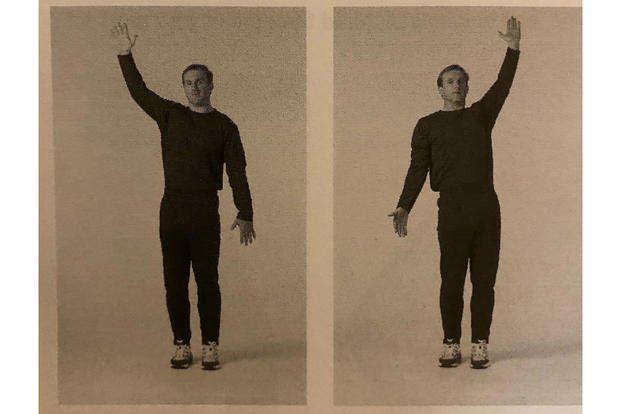
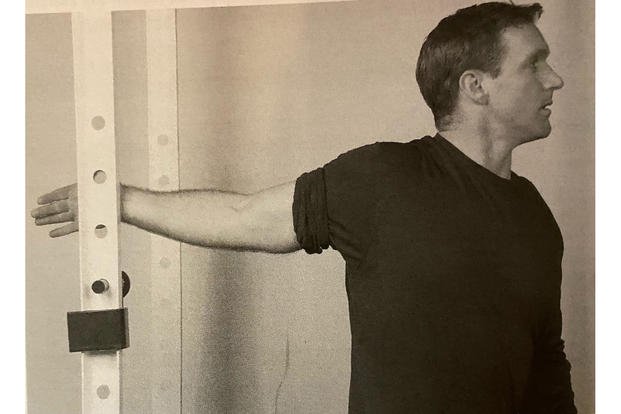
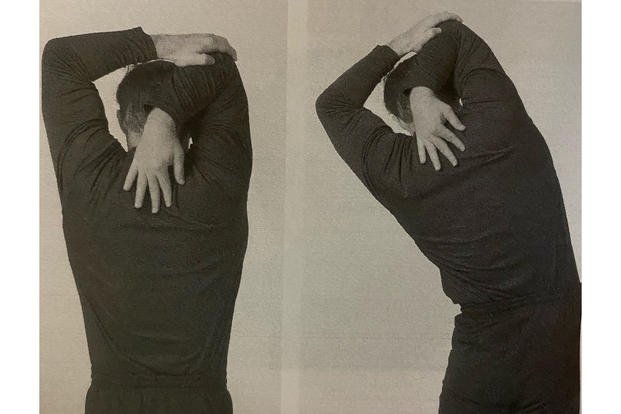
The images below break down the combat swimmer stroke used by many military special operations programs. You should practice this glide position during workouts on land as well since this is the position that will drive your speed and efficiency in the water. This is the goal position you want to achieve by doing the above stretches each day.
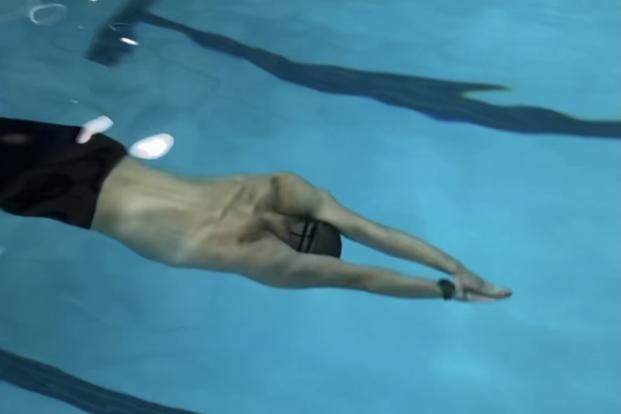
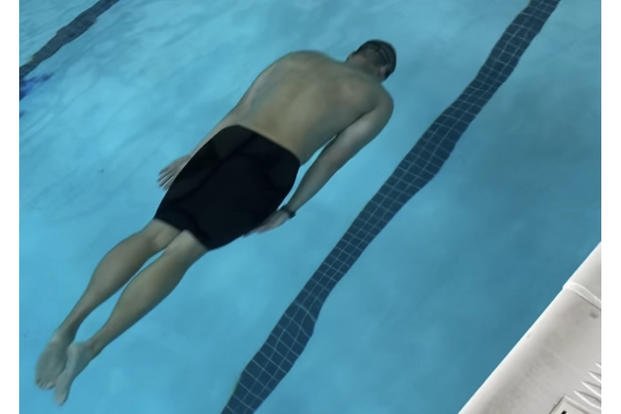
Breathing: Many people lose the streamline position during the breathing portion of the stroke. If you keep your head down instead of popping it up and out of the water to breathe, it will affect the body position and make the body act like a see-saw in the water. Focus on turning to breathe like a screwdriver and breathe with half of your face still in the water.

Recovery: The biggest cause of losing the streamline comes with the recovery of the arms back to the overhead glide position from the hips after the arm pulling phase.
To stay streamlined, keep your arms tight against the body and drag your hands up your torso as you recover your arms to the glide position. If you are lazy with this arm recovery, it’s like you’re putting on the brakes in the water and causing yourself to lose momentum.
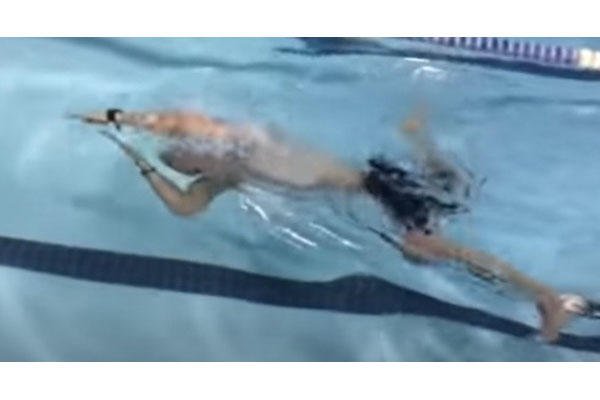
GLIDE : Most people under-glide (less than a count of two Mississippis) and waste their momentum, but some people over-glide (more than three to four Mississippis) and lose all of their momentum.
Being streamlined is key not only to getting to the glide position, but also to staying in the glide position for two-three seconds, especially if you are trying to maintain a yard-per-second pace by simply gliding. Fifty yards in 50 seconds is the goal. This metric is where your efficiency is counted. No glide = no efficiency.
NOTE: It is up to you if you want to glide on your side at a 45-degree angle or on your stomach. Choose whatever works best for you.
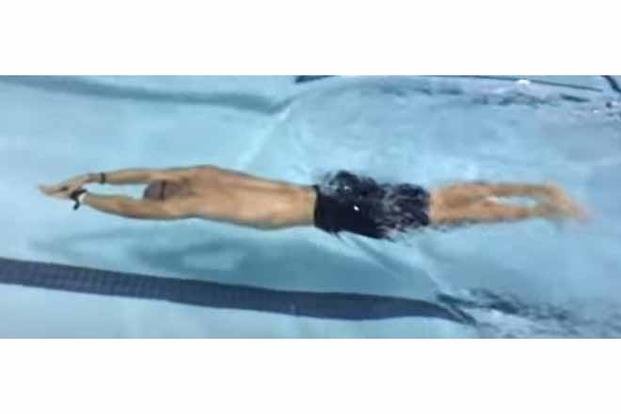
TIPS: In the glide position, biceps should be touching your ears, chin tucked toward the chest, looking down and not forward, one hand on top of the other, feet still and together.
See video of this non-swimming athlete (football) crush the CSS technique and put this sequence in motion and repeat.
Do the stretches daily on land as well as before and during swimming workouts. Eventually, you will become more flexible and this streamline position will not hurt you or be uncomfortable. The pictures in this article are of non-swimming athletes who had to work to gain the shoulder mobility and flexibility required to have a good and effective streamline position.
Stew Smith is a former Navy SEAL and fitness author certified as a Strength and Conditioning Specialist (CSCS) with the National Strength and Conditioning Association. Visit his Fitness eBook store if you’re looking to start a workout program to create a healthy lifestyle. Send your fitness questions to [email protected].
https://www.military.com/military-fitness/faster-swimming-requires-solid-streamline-position

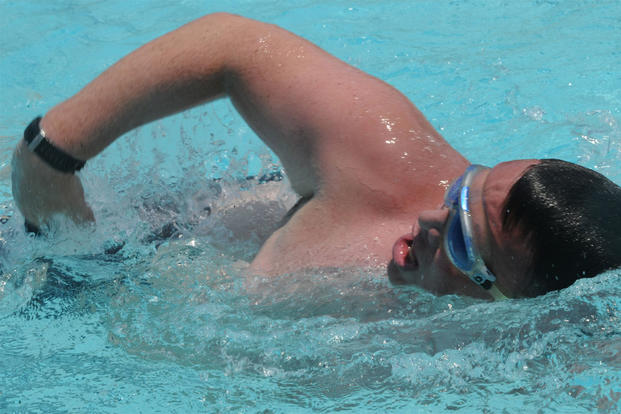
Leave a Reply
You must be logged in to post a comment.